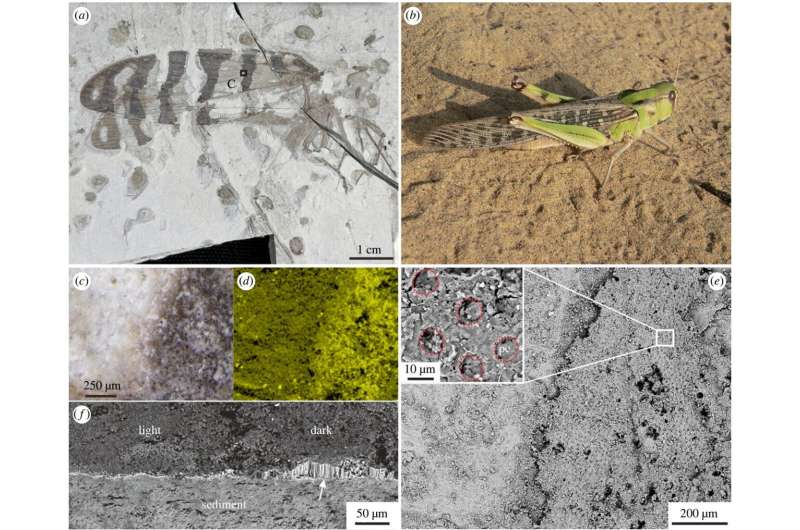September 20, 2023 report
This article has been reviewed according to Science X's editorial process and policies. Editors have highlighted the following attributes while ensuring the content's credibility:
fact-checked
peer-reviewed publication
trusted source
proofread
Experiments on fossilized insects help reveal their true colors

A team of paleontologists and ecological scientists from Nanjing University, the Chinese Academy of Sciences and University College Cork, has found that it might be possible to estimate coloration for some fossilized insects using a new technique. In their paper published in the journal Proceedings of the Royal Society B, the group describes how they compared simulated fossilization of living insects with those from millions of years ago, and what they found by doing so.
Prior research has shown that for all but those encased in amber, it is impossible to estimate the true coloration of fossilized insects. In these cases, such fossils, which tend to be two-dimensional, are monochromatic. They also tend to have unique stripes, spots or irregular patterns in various shades of gray. In this new effort, the research team has tried a new approach to help estimate color patterns on such specimens.
The work by the team involved collecting and killing several modern insects that somewhat resembled certain fossilized insects they had previously obtained. The modern species were wrapped in aluminum foil and then baked in an oven at temperatures ranging from 200° to 500° C as a means for simulating fossilization. The team then studied them using a scanning electron microscope, and did the same with the fossilized samples. Then they compared the two.
In so doing, they found darker patches on the samples that had been baked tended to represent parts of the exoskeleton that had been rich in melanin—a dark pigment. Such spots, they noted, were more heat-resistant, and by extension, more resistant to degradation. That, the team suggests, could mean that darker areas on fossilized insects likely represent parts of the ancient creatures that also had more melanin—a clue that could help make estimations on coloring.
The team also proposes that for fossilized insects, if there are uniform areas of dark hues, it likely represents an artifact of fossilization, whereas areas that are splotchy more likely represent original coloring.
Finally, the researchers also found that heating the bugs subjected them to an intermediary phase where they turned completely black before differentiating into different patterns. The team concludes their paper by suggesting that experiments like theirs could open up new avenues of research around estimating coloration of fossilized insects.
More information: Shengyu Wang et al, The origins of colour patterns in fossil insects revealed by maturation experiments, Proceedings of the Royal Society B: Biological Sciences (2023). DOI: 10.1098/rspb.2023.1333
Journal information: Proceedings of the Royal Society B
© 2023 Science X Network




















